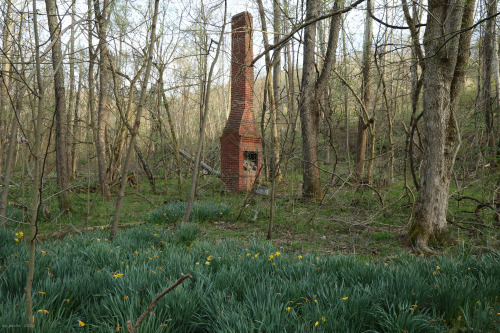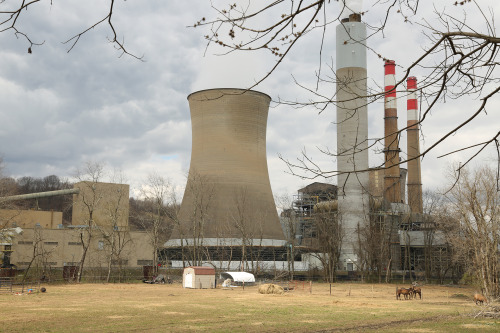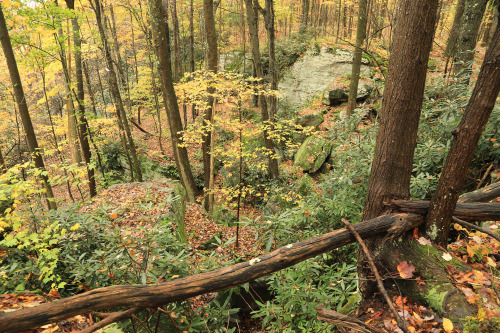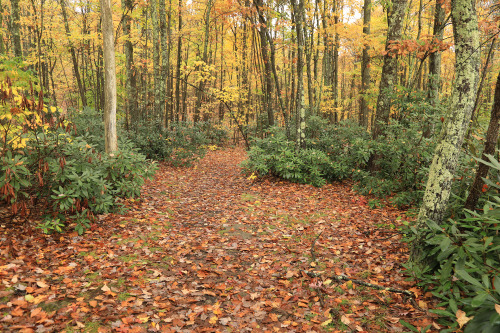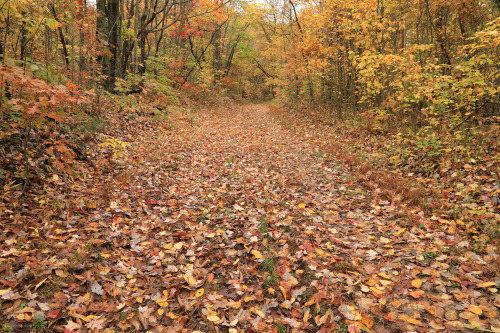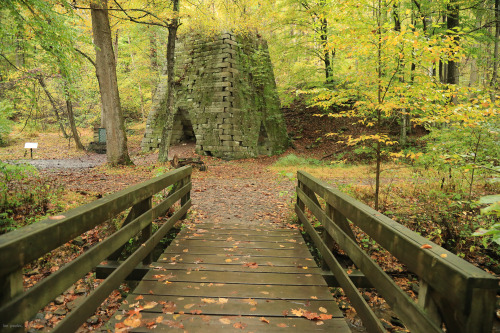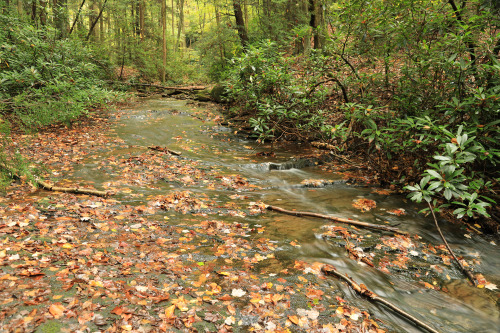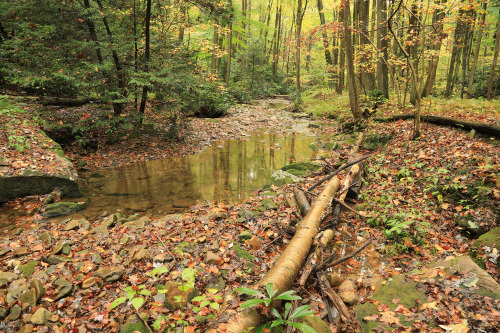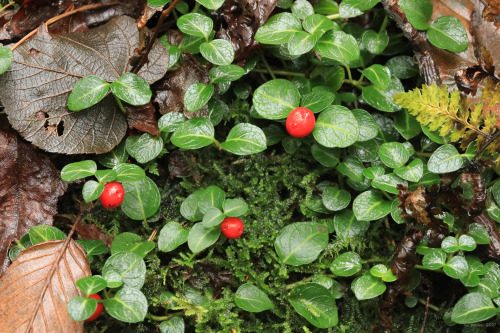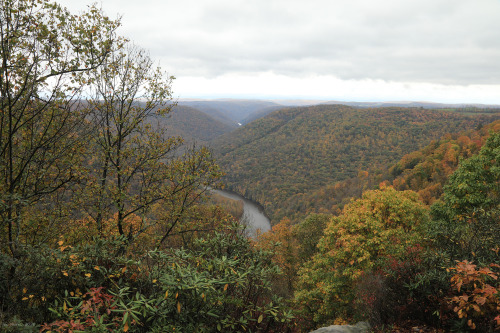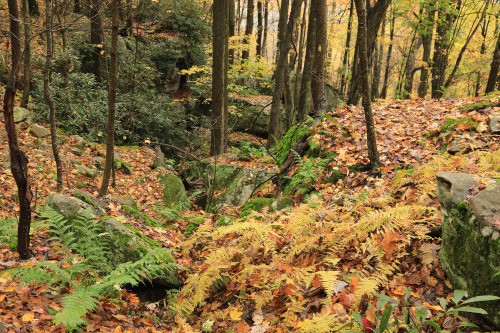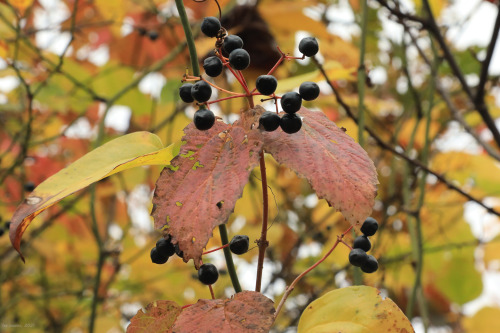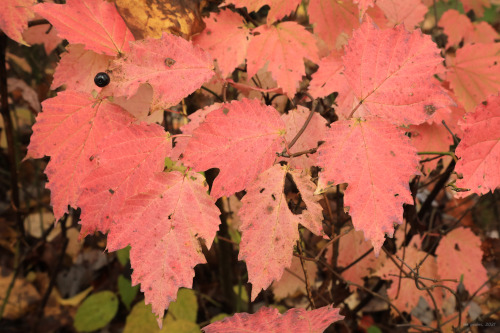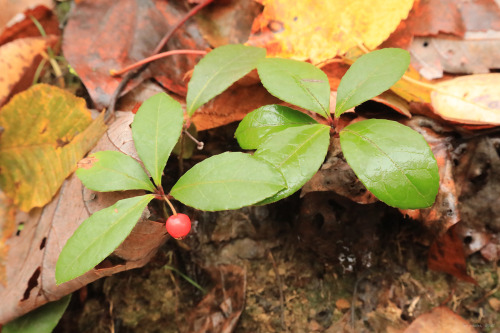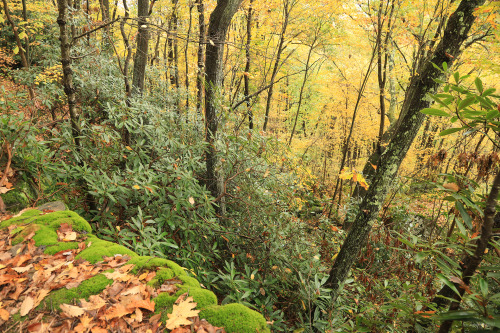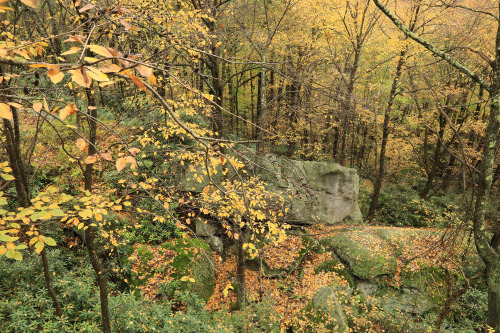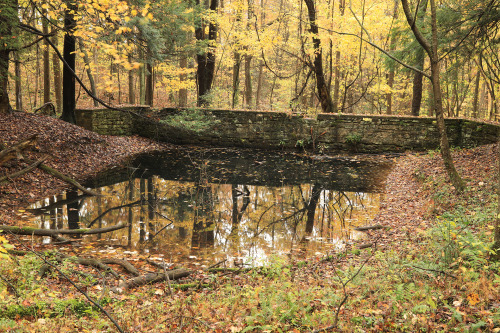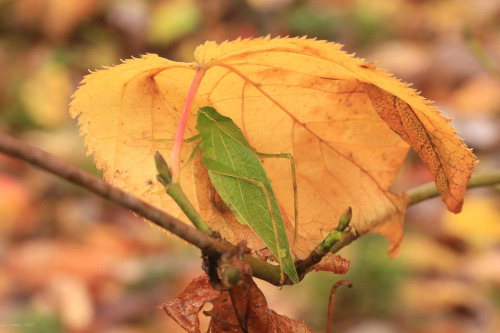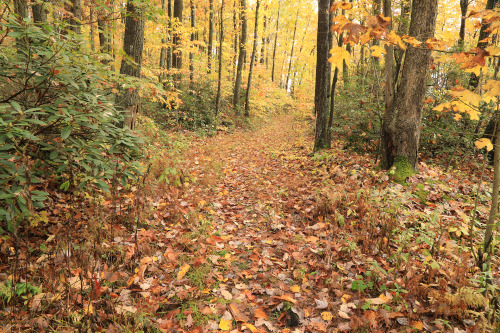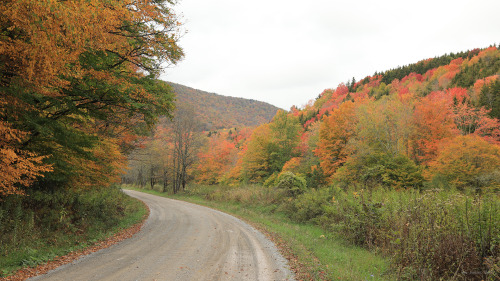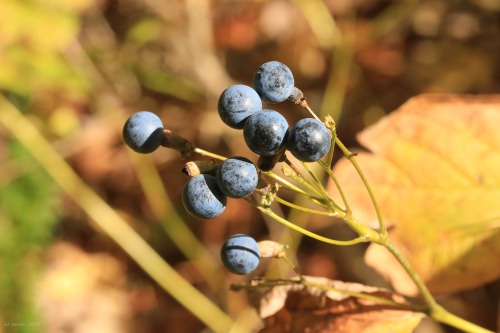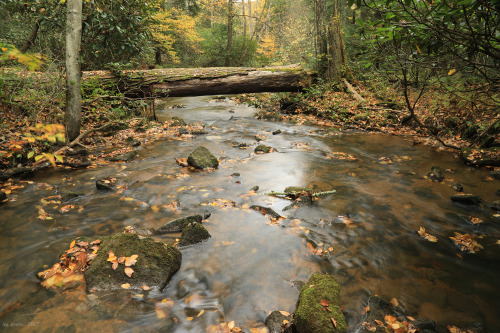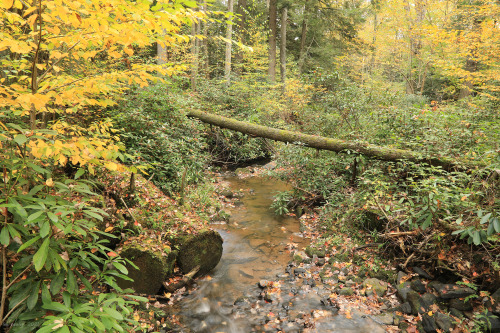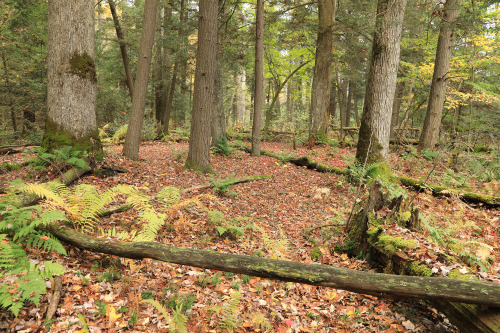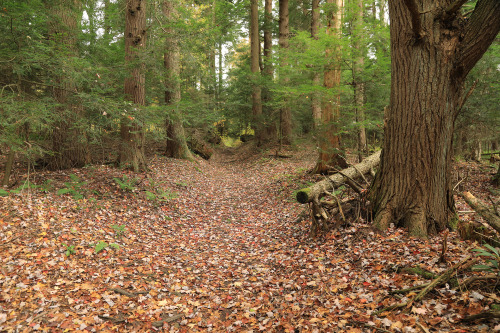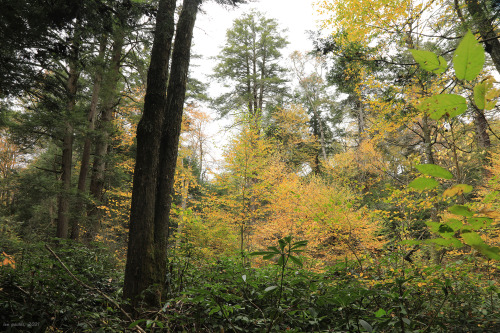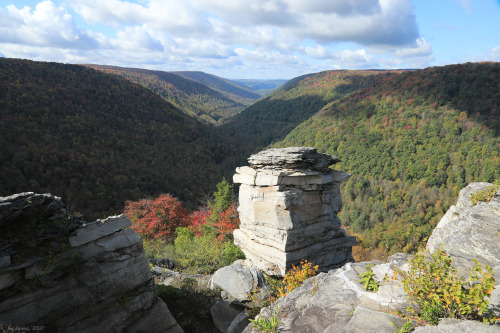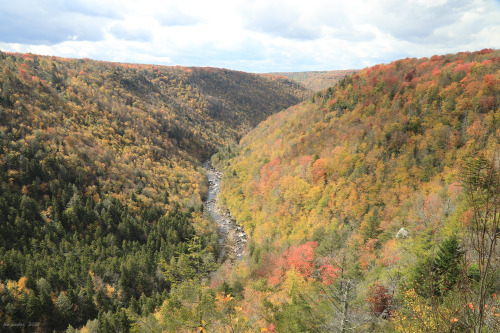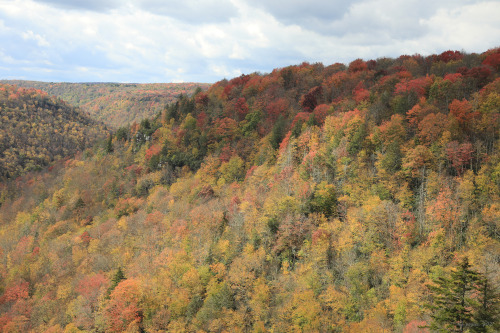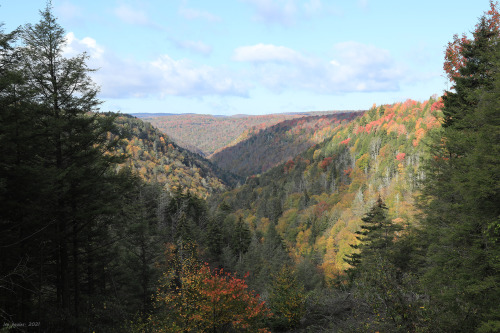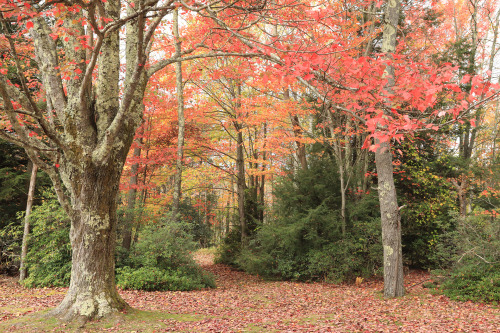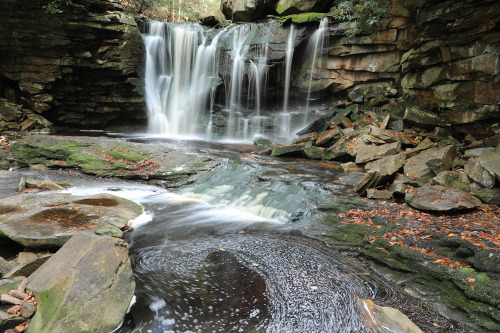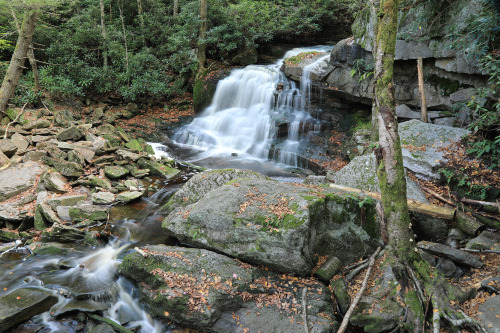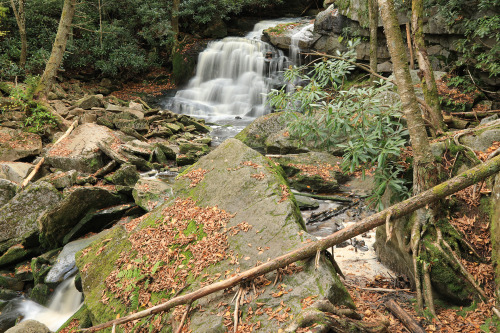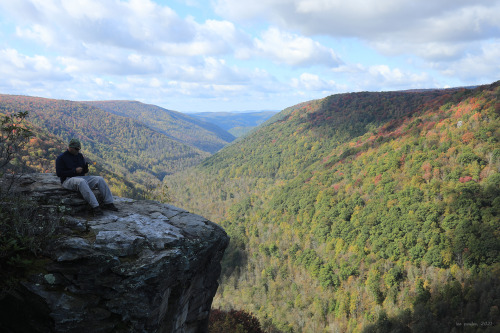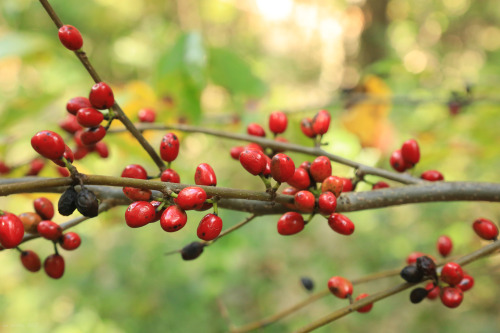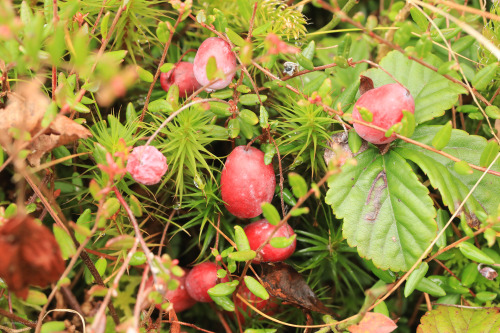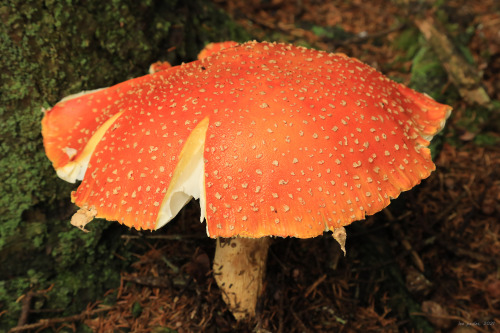#vandalia

Vandalia Vantage Point by Marry Grassell
When Mary Grassell was growing up in a small Western Pennsylvania town, she, like the rest of her family, spent her free time drawing and painting. “I grew up thinking that drawing was what people did for fun, [so] I guess I had a lot of practice early,” Mary tells us. It didn’t take long for that early practice to pay off. When she was just ten years old, Mary was selected to attend the free Tam O’Shanter classes at the Carnegie Institute in Pittsburgh. She was one of two children selected from her school district, and the opportunity proved to be something that would change her life. “I was a little girl from a blue collar family that was given a great gift,” she explains. “What a world of opportunity it opened!”
Every Saturday morning from fifth grade through high school, Mary took a bus and a trolley to Pittsburgh’s Carnegie Institute and, later, to Carnegie Mellon University. She attended classes in drawing, design, and painting and soon knew that she wanted to attend college at Carnegie Mellon as well. “In my family, this was like asking for a million dollars,” she tells us. “Girls did not need to attend college according to my parents. I worked hard in high school so that I could apply for scholarships, which I received, and continued to receive all through my undergraduate years. I appreciate the persons who made these scholarships available.”
With the doors of collegiate study now open to her, Mary decided to pursue the study of graphic design because of her love for type, layout, and illustration, but continued to take painting and printmaking courses as well. After graduation, she became a working graphic designer and was successful in finding jobs while she raised her children and traveled the country for her husband’s career. At one point, Mary was asked to fill an open Typography instructor position at a local community college. Teaching wasn’t something she had planned to explore in her graphic design career, but Mary decided to take the job anyway. To her surprise, she learned that she enjoyed the fusion of practicing and instructing. She liked it so well, in fact, that she decided to pursue teaching at a collegiate level long term. She continued teaching art and design courses at the community college for many years and returned to school herself, earning an MFA from Syracuse University. Eventually, Mary’s husband was transferred to Charleston, West Virginia, but she was able to obtain an adjunct teaching position in Typography at Marshall University. She soon became a full time professor and has remained a faculty member there since 1992. Although Mary continues to teach graphic design, she began to seriously focus her energies on relief printmaking as well and now frequently exhibits her autonomous works. “The two things I had avoided when I graduated from Carnegie Mellon (teaching and exhibiting) are the very things that keep me going now,” she tells us.
When I look back at my life, I think that without the foresight of an art teacher who chose me to attend those classes at Carnegie Institute, and how my knowledge of Typography has gotten me into teaching in two institutions, I was destined to be doing this. I love the classroom and the way teaching keeps the principles of drawing and design at the forefront of my brain. I can’t imagine my life any other way. I always remember that someone informed me that I had talent so many years ago, so I try to give the same encouragement to my students. Maybe they just need someone to tell them: “Hey, you are good at this, and should do this for a living!
While Mary continues to encourage her students and helps to cultivate their talents, she’s spent significant time and energy for her own body of work over the years. She specializes in printmaking, a discipline that has captivated her since her days at Carnegie Mellon, where she was exposed to diverse historical examples of the medium. She takes particular inspiration from two distinct traditions – one being pre-Incunabula printed books and the other Japanese woodblock prints. “While these appear to be two entirely different artforms, they share a few common traits,” she tells us. “Both depicted life as it was at the moment of the creation of the print – the landscape, the dress, the furnishings of the time. Both told stories, making the works important, thereby validating their creation. Both reflected the social climate of the times portrayed. I realized that this is what I wanted to do. I, too, wanted to depict, in my own art forms, what life is like in my time. I wanted the narrative and meaningfulness to be present in my work.”
Mary continues to keep the heart of those historical traditions in mind when she develops her own prints, but an additional layer of inspiration comes from the spontaneity of the process itself. “Every print I make is an experiment,” she explains, “screen printing, mono printing, and etching – and sometimes I use them all together with relief printing. It is all an experiment. There is the creative part, which the artist pursues in good faith, picturing the end product, and then there is the print part, where whatever the artist envisioned is altered by the process itself.” In appreciation of the balance between intentionality and surprise, Mary is particularly drawn to making prints with woodblocks, where the incorporation of an organic component like wood encourages an even deeper relationship between artist and their tools.
I have come to know different woods and their resistances. Some are impossible to cut and some are compliant. The uncooperative woods are a challenge, and I almost like them best…When I print what I have cut, it is always a surprise. I consider the cutting of the block drawing with a knife, and I am so focused at this point, trying to figure out how to approach the wood to get what I want. The wood, at the same time, is saying “do not cut that direction; I don’t like that.” Or “No matter what you do, I am going to leave some residue here that is sure to print. Or, “I am going to cause you to slip here, and cut what you don’t want to cut.” It may sound crazy, but this is the dialogue that the wood has with me. But, the more difficult the wood, the more amazing it prints. It leaves some of its grain in the print as a gift and it produces a quality of line that cannot be drawn or painted, only cut. In the end, both of us working together produces some fine results.
An especially fine result of Mary’s effective balance between her artistic intentions and the natural properties of her tools exists in her print Vandalia Vantage Point, which recently won an Award of Merit from the 2016 West Virginia Juried Exhibition. The enormous print was cut over the course of five months because of the unruly threadlike grain of the wood. According to Mary, she almost had to “trick” the wood so that it wouldn’t unravel like it wanted to. But, in the end, she produced a profoundly detailed 20x30” print. In addition to investing a significant amount of heart and soul in the complex technical process, the subject of the print is representative of an emotional bond, too. The piece depicts a group of string band players circled at the trunk of a massive magnolia tree. Hidden among the branches are two young children, who are watching and listening as the musicians play their songs. “The music I have portrayed in Vandalia Vantage Point is the music of the mountains,” Mary tells us. “I have no special gift for performing, so in my work, I am portraying music with the gifts I have been given. My family, my husband and children, are all very musical, so there is always music in my life.”
Each May, Mary’s family ventures to the Capitol grounds to celebrate the Vandalia Gathering, a special festival that brings together the most acclaimed Appalachian musicians and lovers of string band music. “Groups of musicians gather under huge Magnolia trees on the grounds and play and play,” Mary tells us. “My family pulls up camp chairs and listens for hours…This situation is so unusual, musicians playing outdoors, under the trees, tune after tune with no written music to perform to… It is a musical experience like no other.” Mary routinely sketches and photographs scenes from the Gathering so that she can later incorporate their music into her visual art. On one such occasion was when the inspiration for Vandalia Vantage Point struck:
While watching the musicians, two little girls climbed one of the Magnolia trees to get a better view. No parents scolded them, so I quickly clicked a few photos and sketched some fast sketches because I marveled at their nerve. The musicians in the print are a composite of the musicians we have seen repeatedly over the years. I put them together in one ensemble. In this print, I wanted to show the story of this fine day, the broad leaves of the Magnolia and the bravery of the girls who had the best seat in the house. It is a tribute to the natural talent of the musicians and the historical quality of their music, all in the natural setting of the Vandalia Gathering.
Mary pays homage to her love of Appalachia and its rich history beautifully in Vandalia, and her love of the region contributes a special essence to her larger body of prints as well. “I find that I am compelled to demonstrate the good life of Appalachia,” Mary explains. “I grew up in the northern part of Appalachia in a pocket of immigrant coal miners…I realize that my childhood was unique. This uniqueness which I have hidden all of these years is finally starting to show itself, by itself. This is how I remember it. It was a good life for me…I finally feel richer for this life.” Mary’s deep appreciation for her adopted West Virginia home offers endless inspiration, too. “Every time I drive through West Virginia, I am blown away by the landscape. In all seasons, the landscape shows beauty and steadfastness. This steadfastness of landscape, wildlife, and plants plays a part in my artwork. But the people play an important part as well. They are steadfast and hearty within that landscape. I would like the viewer to get this sense of place, confidence, and beauty as I tell the tales of Appalachian experiences. I would like to share the good life I have experienced.”
Please join us in congratulating Mary on earning an award for her piece Vandalia Vantage Point, which symbolizes her love of printmaking, people, and the region she calls home. It will remain on display in the David L. Dickirson Fine arts Gallery until February 21, and will also be displayed at the Cultural Center in Charleston, West Virginia.
The upper falls area of Deckers Creek with a fresh coating of snow - from earlier today.
“We build our legacy piece by piece, and maybe the whole world will remember you or maybe just a couple of people, but you do what you can to make sure you’re still around after you’re gone.”
- David Lowery
Post link
Repost from a few year back. This photo always makes me feel an odd sense of displacement. The power plant isn’t winning this fight, you see. The horses and the alpacas are. They’re slowing encroaching on this shitpile of fuming fossil emissions with a cunning plan and will someday - when no one is suspecting - kick it all down. I’m rooting for them.
Post link
Sometimes the best winter hike is right around the corner. Tibbs Run Preserve at the West Virginia Botanic Garden conserves the historic artifacts of the Tibbs Run Reservoir and a lovely old-growth hemlock forest, which - like all ancient forests - attains an incredibly intense, primordial beauty after a newly fallen snow. This natural gem nestles in a gentle mountain bowl only ten minutes outside the Morgantown city limits.
Post link
A gorgeous winterberry (Ilex verticillata), one of Appalachia’s native deciduous hollies, lights up the alder swamp at the West Virginia Botanic Garden. The shrub’s winter regalia is particularly stunning against the snow.
Post link
I’m keeping a low profile until deer hunting season runs its course. Until then, a few mementos from late October on Snake Hill.
Post link
Partridgeberry (Mitchella repens) is a trailing, evergreen vine with a fondness for moist, sandy slopes and stream banks of Appalachia’s rich, old woods. In late fall, this ambitious colonizer peppers the forest floor with incandescent red, berry-like drupes that literally appear to glow amid the drab leaf litter. Partridgeberry makes a gorgeous ground cover for shady spots in native wildflower gardens and is especially beautiful for winter gardens.
Post link
The foliage is now reaching peak color in the Cheat River Canyon.
Field notes:
1. Yellow is the predominant color in many sections of the canyon, especially where American beech, tulip poplar, sugar maple, witch hazel, and yellow and black birch are the dominant species. Sugar maple has a highly variable leaf color in the canyon, ranging from vibrant yellow to brilliant orange. In the rockier sections of the canyon, where it occurs with beech and birch, it seems to dress like its neighbors.
2. The oaks were just starting to go on Sunday, and will add some additional color this upcoming weekend - when everything should be at peak. Over the past decade or so, peak color in the local NC WV area has moved steadily from mid to late October to early November. Good article here on how climate change is dulling and delaying peak in some areas of the country. Higher elevations of the Alleghenies seem to be more resilient and have continued to change over in early October.
3. Mapleleaf viburnum (Viburnum acerifolium) is now firmly at the top of my list of favorite native shrubs. Everything about this plant fills me with joy, from its graceful, maple-like foliage to its somewhat balletic, clumping habit. In the spring, it produces the most enchanting bouquet of delicate white flowers with pink highlights. The flowers give way in the fall to iridescent blue-black berries, which contrast beautifully with the pastel-like red of its foliage. Fortunately for me, mapleleaf viburnum loves this canyon and is common throughout.
4. Eastern teaberry (Gaultheria procumbens), also sometimes called American wintergreen (not to be confused with striped wintergreen), carpets the acidic forest floor of the drier, oak-hickory woods in the canyon and adds a nice pop of green color (freckled with bright red berries) to the fallen leaves. The same is true of the various species of clubmosses that seem delighted to grow in the canyon, including fan clubmoss (Lycopodium digitatum), the most common variety.
5. Gray, drizzly overcast has been the rule for the past two weeks in NC WV. Normally, I would not be overly happy about that. But for some reason in the fall, it fits the mood and can actually bring out the leaf color even more. So I’m not going to bitch and instead be contented with what I have to work with. :-)
Post link
A greater angle-winged katydid (Microcentrum rhombifolium) seeks shelter in the hollow of a leaf on Snake Hill yesterday. Although NC West Virginia has yet to experience its first frost, the area’s autumn songsters have nonetheless dwindled to a few hardy baritones. The final act is drawing near.
Post link
“In the deep fall
don’t you imagine the leaves think how
comfortable it will be to touch
the earth instead of the
nothingness of air and the endless
freshets of wind? And don’t you think
the trees themselves, especially those with mossy,
warm caves, begin to think
of the birds that will come — six, a dozen — to sleep
inside their bodies? And don’t you hear
the goldenrod whispering goodbye,
the everlasting being crowned with the first
tuffets of snow? The pond
vanishes, and the white field over which
the fox runs so quickly brings out
its blue shadows. And the wind pumps its
bellows. And at evening especially,
the piled firewood shifts a little,
longing to be on its way.”
- Mary Oliver
Post link
County Route 29 along Gandy Creek in the Monongahela National Forest. The fall foliage here is reliably stunning in any year.
Post link
Above is a sampling of the fall colors from this past weekend at Blackwater Canyon. Due to the extreme elevation change from the top to the bottom of the canyon, the leaf color is quite variable depending on location. The leaves at the higher elevations may be at peak color, while those in the lower section of the canyon may have barely changed at all (note the differences in the first two photos).
Post link
Above are the first two cataracts of Elakala Falls on Shays Run at Blackwater Falls State Park. Two more cataracts (even more beautiful) descend into the canyon below, but they’re only accessible after a fair amount of ballsy bushwhacking through rhododendron and hemlock thickets and perilous navigation over imposing sandstone boulders and outcroppings, which I would never do by myself. With Bear Grylls maybe. The falls are just part of the package, of course. Everything about this place - from the tortured root systems clinging to the moss-covered boulders to the rhododendron dramatically cascading from the sheer sandstone walls - is alive with an ancient and powerful self-awareness, extending back eons to the planet’s very origins. The geological history of the world is written into this rock, and it’s a story well worth getting to know.
Post link
This brave dude (not me) got a front-row seat to the breathtaking view from Lindy Point into Blackwater Canyon on Sunday. A cold, stiff wind blew relentlessly up the canyon yesterday - I was buffeted so hard I was barely able to take this photo with my camera perched on a heavy, metal tripod.
Post link
The second cataract of Elakala Falls at Blackwater Falls State Park earlier today.
In their final acts of October sacrifice, hay-scented and interrupted ferns burn away under a beautifully-lit forest. The intoxicating odor of their self-immolation is still in my head.
Post link
Appalachia’s Autumn Bounty, Panel 2: Nature’s final push before the killing frost of October.
Post link

